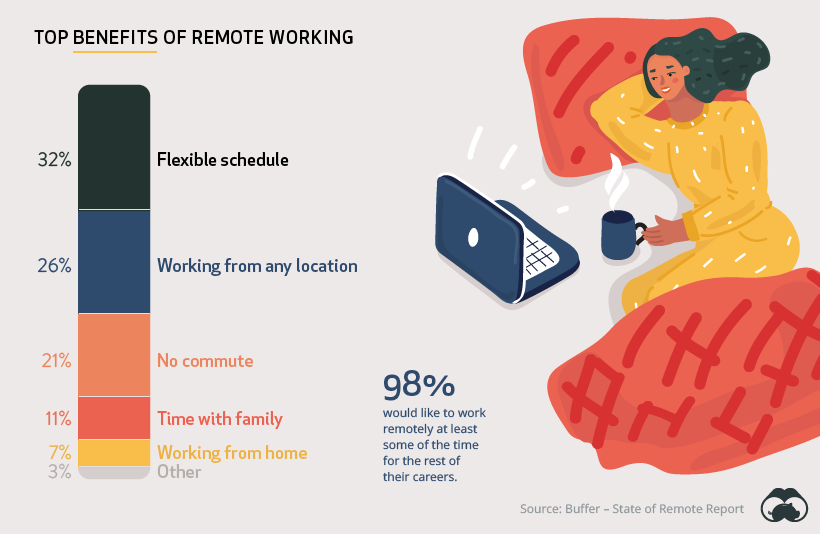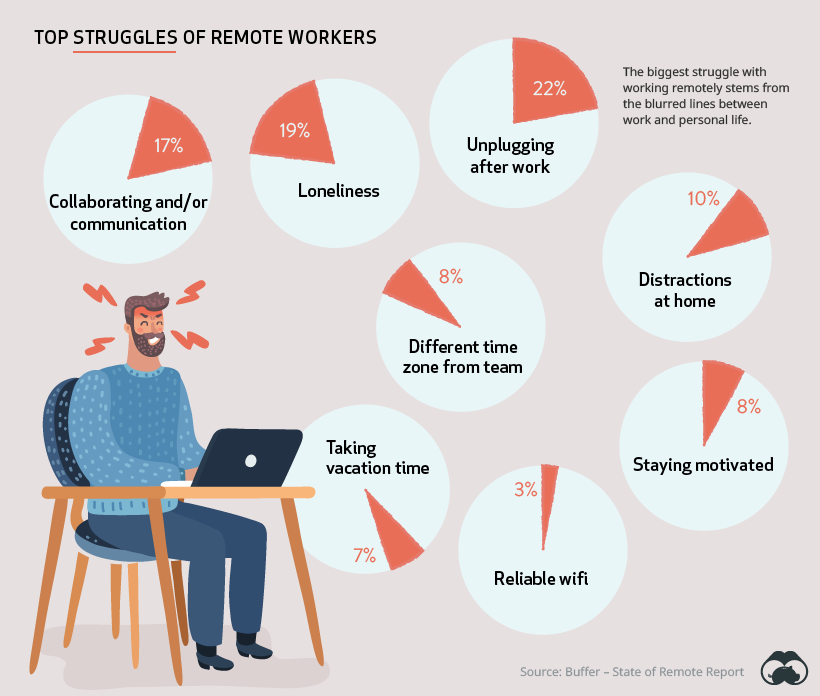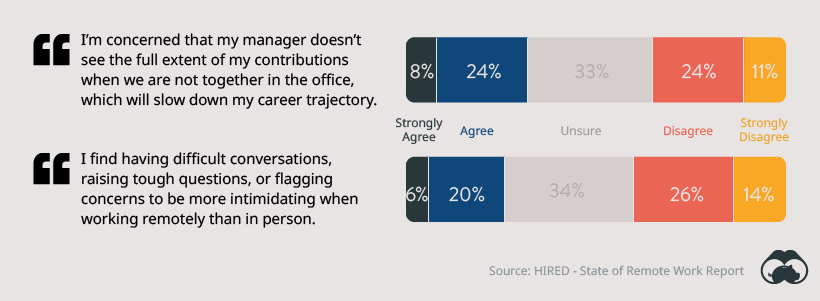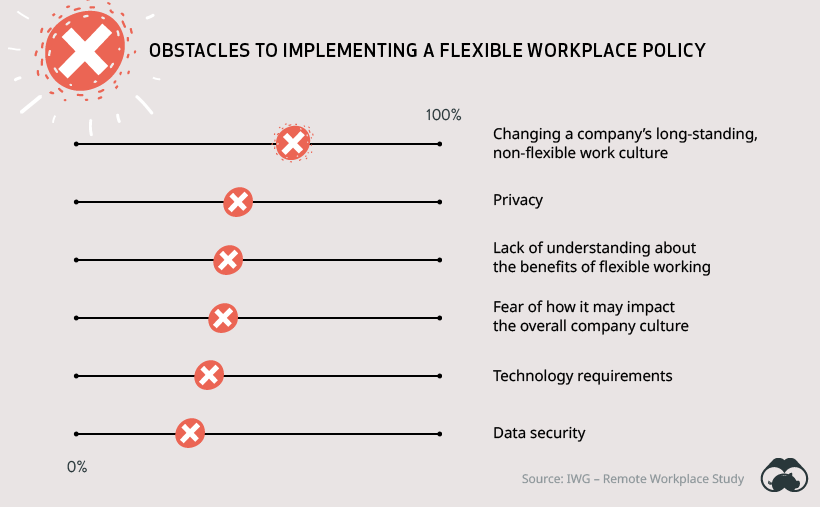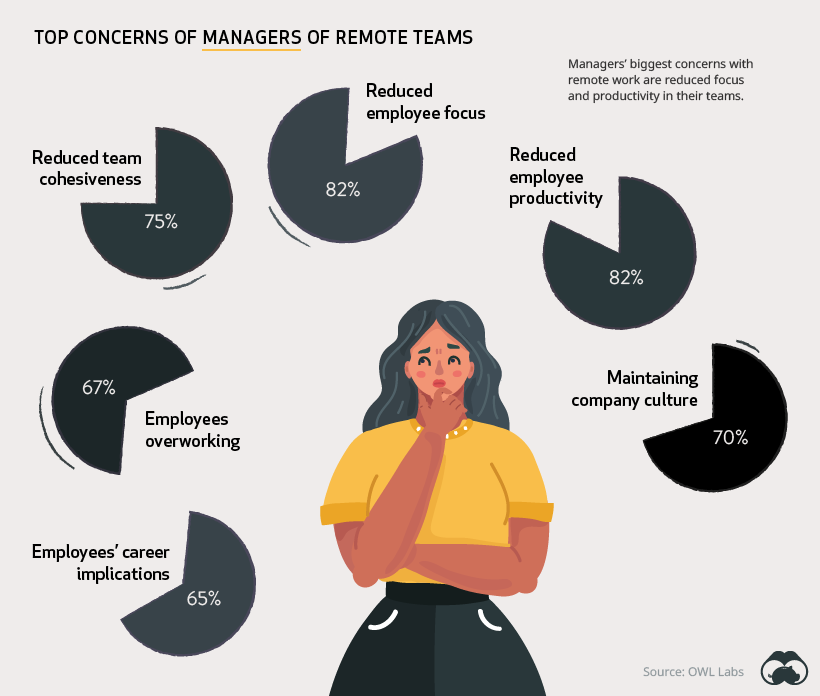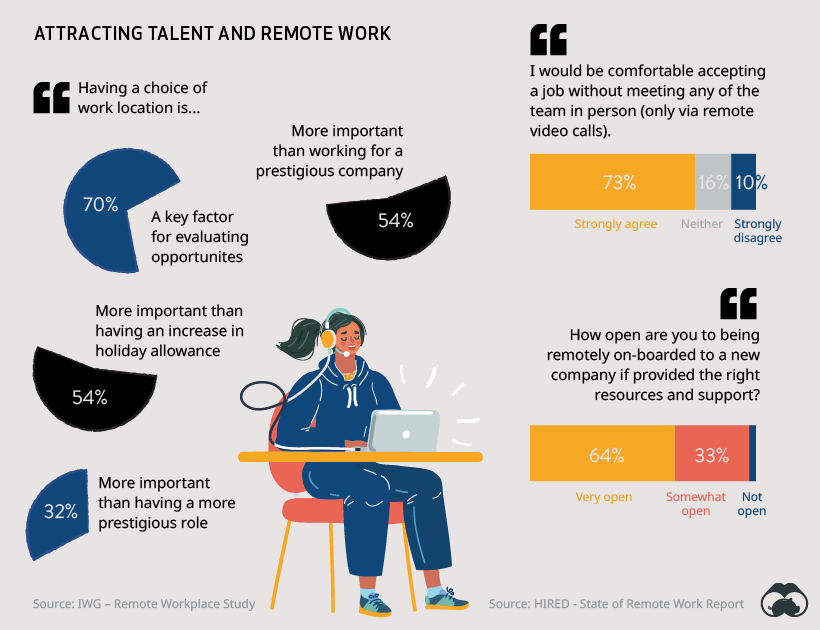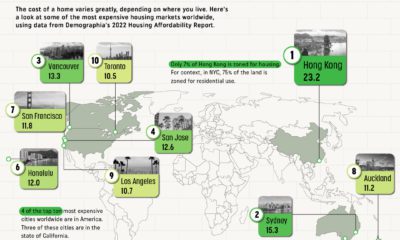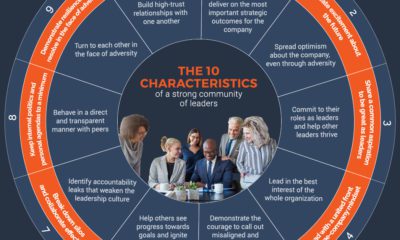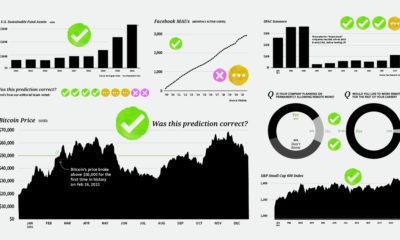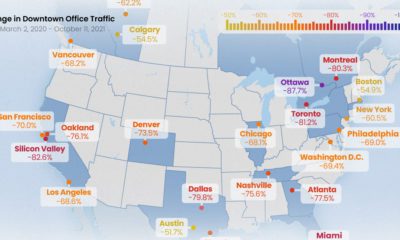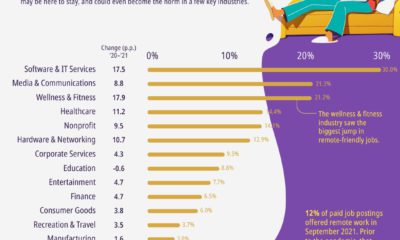With millions of people taking part in this work-from-home experiment, it’s worth asking the question – how do people and companies actually feel about working from home?
The Flex Life
It’s no secret that people value freedom of choice. A whopping 98% of people would like to have the option to work remotely for the rest of their careers. Aside from working in sweatpants, what are the things people like about working from home?
A flexible schedule, the ability to work from any location, and no more commuting were the top reported benefits. Of course, not everything is positive about working from home. Here are some of the challenges people face as they work remotely.
The top issue faced by remote workers was “unplugging” from work. Without the clear-cut change of location and defined office hours, many people had a tougher time clearly dividing their personal and professional time. As well, the lack of person-to-person communication can be a challenge for some people. In fact, one-third of people were concerned that the full extent of their professional efforts wouldn’t be appreciated because of a lack of in-office contact.
For the majority of people, having tough conversations via phone or teleconferencing software was actually viewed as a positive development.
Barriers to Implementing a Remote Work Policy
Despite the popularity of remote and flexible working, not every company has embraced the concept. Here are some of the reasons why.
While there can be technical or security-related reasons behind remote work resistance, a major barrier is simple resistance to change. Over 50% of companies that didn’t have a flexible or remote workplace policy cited “longstanding company policy” as the reason. In other words, that is just the way things have always worked. Here are the reservations managers have with remote work:
Managers are worried that productivity and focus will be diminished if people are working in more informal locations, such as home or a cafe. Also, if people aren’t working in the same physical location, managers feel that team cohesiveness and company culture could suffer. On the flip side, the cost savings associated with remote work may win over many companies. Research has found that typical employer can save about $11,000 per year for every person who works remotely half of the time. As well, switching to virtual meets in some instances can also be a significant cost savings.
Flexibility: The Ultimate Perk?
Location flexibility isn’t just a way to keep current employees happy. Companies that don’t embrace flexible working may find themselves at a disadvantage when recruiting new talent. Nearly two-thirds of candidates say that having a choice of work location is a key consideration in choosing an employer.
Lockdown measures have highlighted the value of workplace flexibility – particularly for people with kids. A total of 86% of parents now want to work flexibly, compared to 46% pre-coronavirus. As the economy slowly begins to reopen, it remains to be seen whether or not COVID-19 accelerated inevitable trends in workplace culture. If so, taking Zoom calls in sweatpants may become the new normal for millions of workers. on Even while political regimes across these countries have changed over time, they’ve largely followed a few different types of governance. Today, every country can ultimately be classified into just nine broad forms of government systems. This map by Truman Du uses information from Wikipedia to map the government systems that rule the world today.
Countries By Type of Government
It’s important to note that this map charts government systems according to each country’s legal framework. Many countries have constitutions stating their de jure or legally recognized system of government, but their de facto or realized form of governance may be quite different. Here is a list of the stated government system of UN member states and observers as of January 2023: Let’s take a closer look at some of these systems.
Monarchies
Brought back into the spotlight after the death of Queen Elizabeth II of England in September 2022, this form of government has a single ruler. They carry titles from king and queen to sultan or emperor, and their government systems can be further divided into three modern types: constitutional, semi-constitutional, and absolute. A constitutional monarchy sees the monarch act as head of state within the parameters of a constitution, giving them little to no real power. For example, King Charles III is the head of 15 Commonwealth nations including Canada and Australia. However, each has their own head of government. On the other hand, a semi-constitutional monarchy lets the monarch or ruling royal family retain substantial political powers, as is the case in Jordan and Morocco. However, their monarchs still rule the country according to a democratic constitution and in concert with other institutions. Finally, an absolute monarchy is most like the monarchies of old, where the ruler has full power over governance, with modern examples including Saudi Arabia and Vatican City.
Republics
Unlike monarchies, the people hold the power in a republic government system, directly electing representatives to form government. Again, there are multiple types of modern republic governments: presidential, semi-presidential, and parliamentary. The presidential republic could be considered a direct progression from monarchies. This system has a strong and independent chief executive with extensive powers when it comes to domestic affairs and foreign policy. An example of this is the United States, where the President is both the head of state and the head of government. In a semi-presidential republic, the president is the head of state and has some executive powers that are independent of the legislature. However, the prime minister (or chancellor or equivalent title) is the head of government, responsible to the legislature along with the cabinet. Russia is a classic example of this type of government. The last type of republic system is parliamentary. In this system, the president is a figurehead, while the head of government holds real power and is validated by and accountable to the parliament. This type of system can be seen in Germany, Italy, and India and is akin to constitutional monarchies. It’s also important to point out that some parliamentary republic systems operate slightly differently. For example in South Africa, the president is both the head of state and government, but is elected directly by the legislature. This leaves them (and their ministries) potentially subject to parliamentary confidence.
One-Party State
Many of the systems above involve multiple political parties vying to rule and govern their respective countries. In a one-party state, also called a single-party state or single-party system, only one political party has the right to form government. All other political parties are either outlawed or only allowed limited participation in elections. In this system, a country’s head of state and head of government can be executive or ceremonial but political power is constitutionally linked to a single political movement. China is the most well-known example of this government system, with the General Secretary of the Communist Party of China ruling as the de facto leader since 1989.
Provisional
The final form of government is a provisional government formed as an interim or transitional government. In this system, an emergency governmental body is created to manage political transitions after the collapse of a government, or when a new state is formed. Often these evolve into fully constitutionalized systems, but sometimes they hold power for longer than expected. Some examples of countries that are considered provisional include Libya, Burkina Faso, and Chad.
